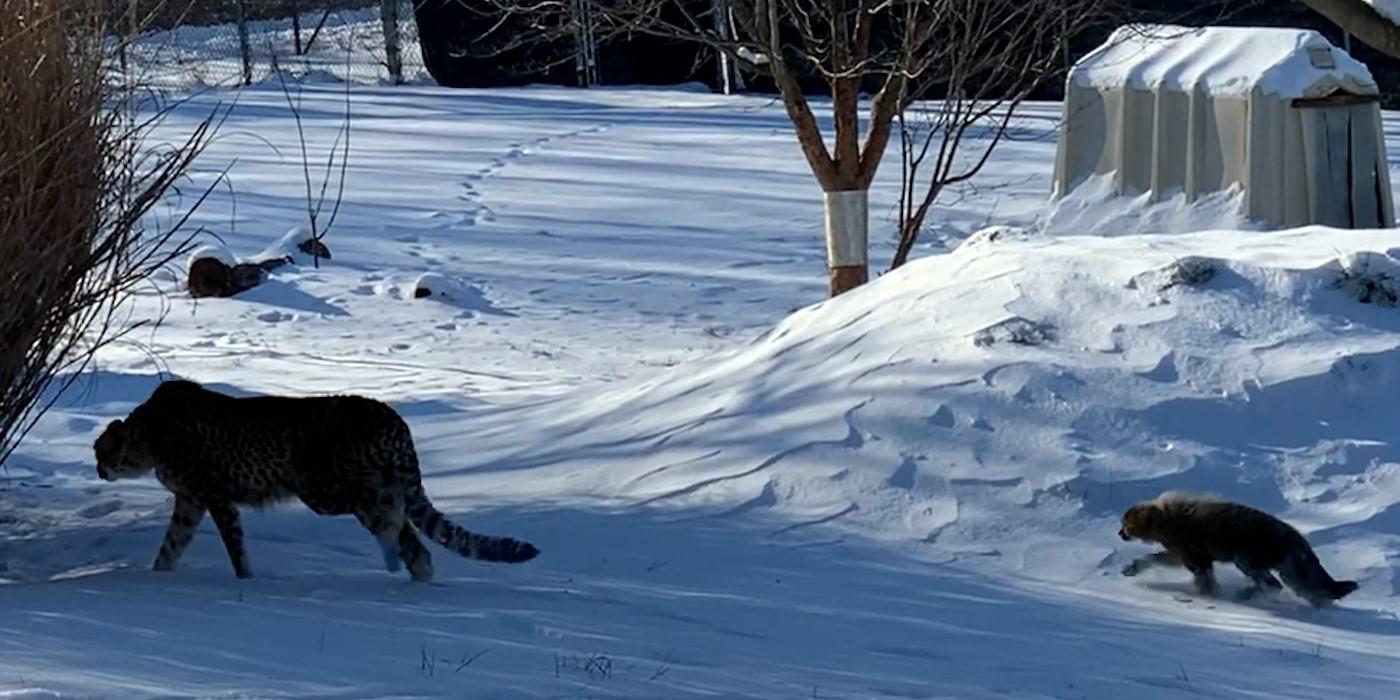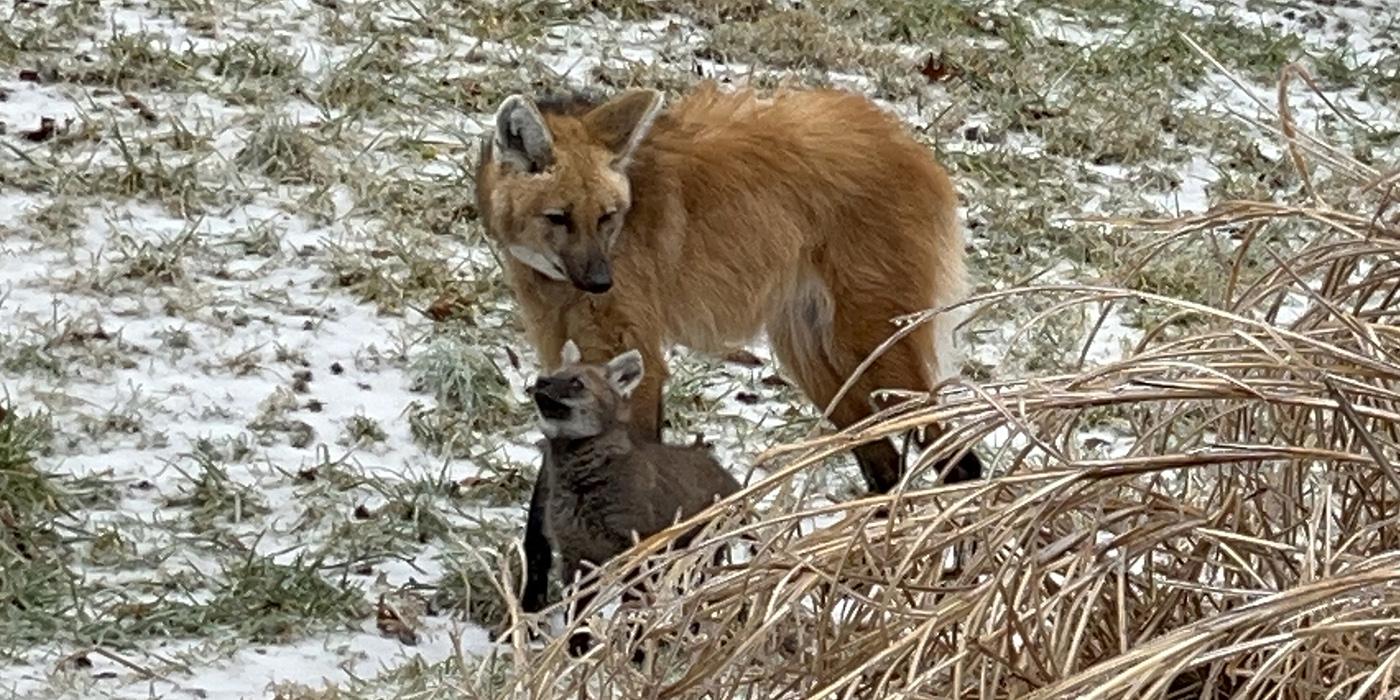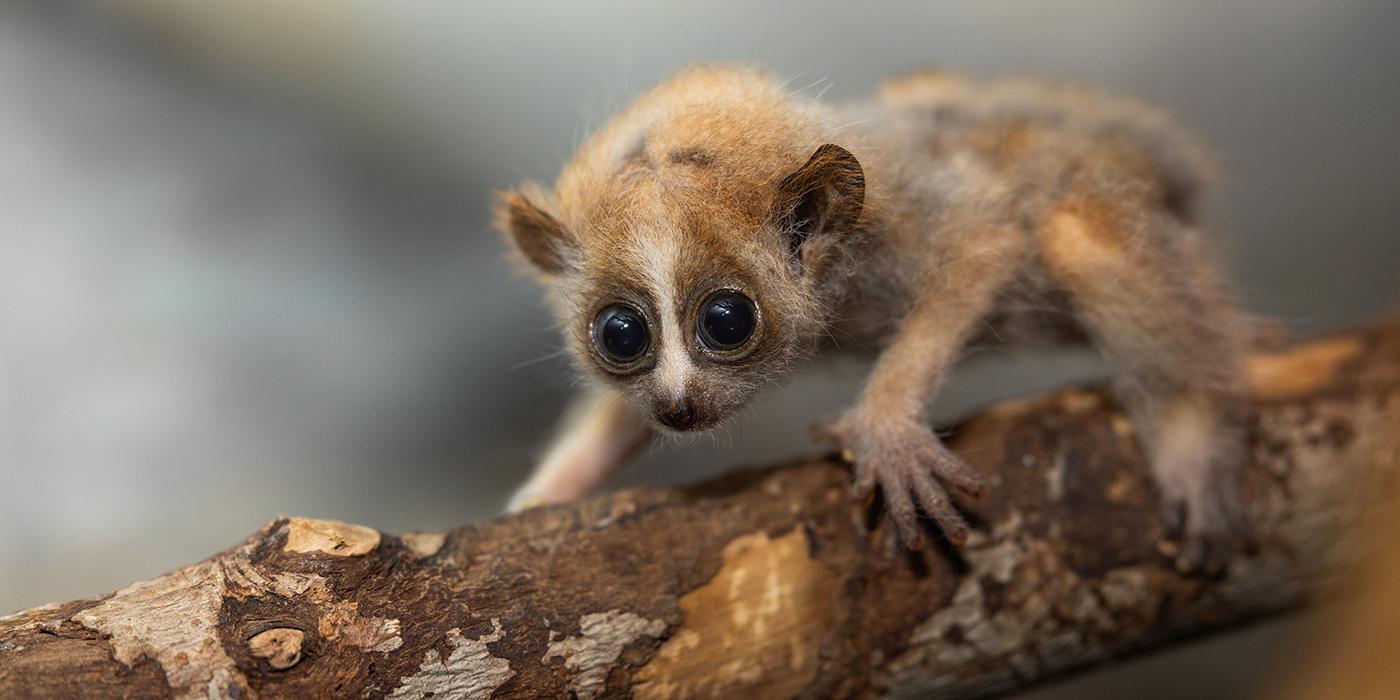#CheetahCubdate 13: Cubs in the Snow

The verdict is in on our 14-week-old cubs’ first snow experience! They are not fans.
The new year kicked off with a lot of snow at the Smithsonian Conservation Biology Institute in Front Royal, Virginia. Some of our adult cheetahs love the snow, others hate it, and some are just indifferent. Rosalie falls into the latter category. She seems unphased by the snow and cold. She takes after her mother, Sanurra, in this regard.
Rosalie’s cubs do not follow in their mom’s paw-steps. They seem to prefer hunkering down in the den rather than venturing out. Some of the cubs are a little more tolerant than others. During the snow in mid-January, two of the cubs refused to leave the den with the rest of the family. It took Rosalie calling and going back to get them before they finally came out.
Meanwhile, mealtime is getting crowded! A little over a month ago, Rosalie started insisting on eating with her cubs. This is common for cheetah moms and it usually happens around the time the cubs are 8 weeks old. In response to Rosalie’s insistence, the cubs got to try their first frozen-thawed rabbits!
These whole-prey items are cub-sized; they are smaller than the rabbits our adult cheetahs get. It’s always amusing to watch the cubs interact with a new food for the first time because some of the cubs aren’t sure what to do. Thankfully, Rosalie is an excellent mom and teacher. It didn’t take long for all the cubs to learn to dig in and enjoy!
Carcass feedings, like the rabbits, mimic what the cubs would experience in the wild and are important for their overall health. The skin, fur and bones are full of fiber and aid in the digestive process. Internal organs are also rich in nutrients, which help the cubs grow big and strong. Prey items also help strengthen their jaw muscles and keep their teeth healthy.
In the coming weeks, we will also introduce the cubs to horse bones. While the bones meet many of the same dietary needs as the rabbits, they are a larger item for the cubs to chow down on. We only get these bones in one size, so they’ll be getting the exact same thing as the adult cheetahs!
If you tune into the Cheetah Cub Cam, you might see one or two cubs playing in the den. While Rosalie insists they eat as a family, the cubs are starting to play independently. A great example of this is one of the female cubs shown in the video above. I tuned into the cam last week, and there she was! Rolling around and having a ball in the den all on her own.
During their exam in early January, all five cubs bounded away with a clean bill of health. These exams are very routine now. We look over their bodies, give them vaccines and dewormers, and take a blood sample. However, next month marks the last “cub exam” for these five cubs.
The cubs are getting a little too big for us to pick them up, so we started training them to help in their own care. Weighing them on a scale (not in a bucket!) is one of the first steps. This can be a challenge with a litter of five because, for the most part, they move as a herd.
Keepers have found tag-teaming to be the best method for success. One keeper will distract half the cubs with some meat on a heavy-duty serving spoon, while the other works with one or two cubs to get them on the scale. As with all our animals, these training sessions are voluntary. The cubs can choose to participate or walk away. If they choose to stay, we reward them with a favorite food. This is known as positive reinforcement training.
Rosalie’s cubs have just been introduced to a cheetah favorite reward: beef blood! Once a cub gets on the scale, they can drink some beef blood from a squeeze bottle. So far, the training sessions are going well and on January 15, keepers were able to get individual weights on all five cubs! They are about the size of a small dog now, weighing between 11 and 15.5 pounds (5 to 7 kilos).
Tune into the webcam this winter to catch more cheetah cub cuddle puddles and play time. Check back in February for the next #Cubdate!
Related Species:



